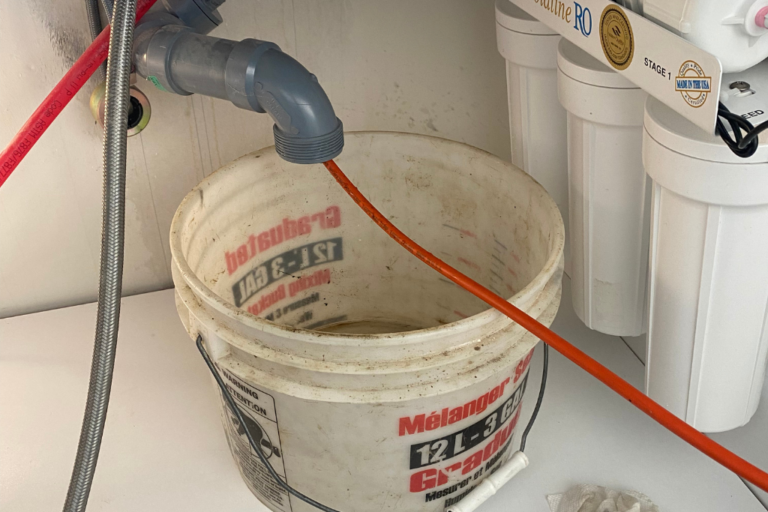The Role of Plumbing in Bathroom Design: Tips for a Functional Space

Last Updated: December 3, 2024
When designing a bathroom, it’s easy to focus on aesthetics—choosing tiles, colors, and stylish fixtures. However, plumbing forms the backbone of any bathroom design, determining how efficiently the space functions. A thoughtfully designed bathroom not only enhances daily routines but also ensures long-term convenience and comfort. In this blog, we’ll delve into how plumbing influences bathroom design and share practical tips to create a functional and beautiful space.
Key Takeaways
- Plumbing determines your layout: The placement of plumbing stacks and fixtures significantly impacts your bathroom’s layout and usability.
- Smart fixture choices save space: Strategic selection of sinks, toilets, and showers can maximize functionality in small bathrooms.
- Water efficiency is essential: Opt for eco-friendly fixtures like low-flow toilets to save water and reduce bills.
- Proper ventilation prevents problems: Ventilation systems are key to avoiding mold, mildew, and unpleasant odors.
- Trends matter, but functionality is key: Modern trends like smart fixtures and floating vanities can enhance design, but ensure they align with practical needs.

Understanding Plumbing’s Influence on Bathroom Layout
Plumbing is the starting point of any bathroom design. The location of pipes, drains, and stacks dictates where fixtures can be placed. Moving these elements can be costly, so understanding your bathroom’s existing plumbing layout is crucial for budget-friendly renovations.
Pro Tip: If you’re planning a major redesign, consult a plumber early to determine what’s feasible within your space and budget.
Strategic Fixture Placement
The placement of fixtures like toilets, sinks, and showers can make or break the functionality of your bathroom. Consider these guidelines for optimal design:
- Toilets: Maintain at least 15 inches from the center of the toilet to any wall or other fixture. This ensures comfort and accessibility.
- Sinks: Choose sink types based on the size of your bathroom. Wall-mounted sinks are great for small spaces, while double vanities are ideal for larger bathrooms.
- Showers and Bathtubs: Assess your lifestyle needs. Showers save space, while bathtubs add luxury. A shower-tub combo can provide the best of both worlds.
- Bidets: With increasing popularity, bidets are being integrated into modern bathrooms for hygiene and comfort. Ensure proper plumbing connections for seamless installation.
Ventilation and Plumbing Stack Considerations
Poor ventilation can lead to moisture buildup, resulting in mold and unpleasant odors. Ventilation systems, coupled with a well-placed plumbing stack, help maintain air circulation and prevent these issues.
Pro Tip: Install a high-quality exhaust fan to complement your plumbing system, especially in bathrooms with no windows.

Water Efficiency and Eco-Friendly Plumbing
Eco-friendly fixtures not only conserve water but also reduce utility bills. Look for:
- Low-flow toilets and faucets: These can save thousands of gallons of water annually without compromising performance.
- Aerated showerheads: They mix air with water, maintaining pressure while using less water.
- Greywater systems: Recycle water from sinks and showers for use in toilets or irrigation.
Choosing the Right Pipes and Materials
The materials used for plumbing can impact the durability and efficiency of your bathroom. Popular choices include:
- PEX Pipes: Flexible, durable, and resistant to freezing, PEX is great for most modern bathrooms.
- Copper Pipes: Known for their longevity and ability to handle high water pressure.
- PVC Pipes: Lightweight and affordable, but best for drainage rather than water supply.
Accessible Bathroom Design
Accessibility is increasingly important in bathroom design. Features like wider doorways, grab bars, and curbless showers ensure the space is functional for individuals with mobility challenges.
Pro Tip: Design your bathroom with the future in mind. Universal design elements make your bathroom accessible to all ages and abilities.
Bathroom Plumbing Trends
Modern bathrooms combine style and functionality. Here are a few trends to consider:
- Smart Fixtures: Touchless faucets, smart toilets with self-cleaning features, and digitally controlled showers are making bathrooms more convenient.
- Floating Vanities: These add a contemporary look while creating the illusion of more space.
- Heated Flooring: Integrate hydronic or electric heated floors for added luxury.
Proper Maintenance and Plumbing Care
Regular maintenance ensures your bathroom plumbing stays in top shape. Simple steps like checking for leaks, cleaning drains, and inspecting seals can prevent costly repairs.
Pro Tip: Schedule annual professional plumbing inspections to catch issues early and maintain optimal performance.
Budget Considerations
Renovating a bathroom can be expensive, but careful budgeting helps you prioritize. Allocate funds for essential plumbing work first before investing in luxury features.
Pro Tip: When upgrading, choose durable fixtures and materials to avoid frequent replacements and repairs.
FAQS
Yes, but it may require significant plumbing work to relocate pipes and drains. Consult a professional to assess feasibility and costs.
Signs of poor ventilation include lingering moisture, mold growth, or persistent odors. Installing an exhaust fan can address these issues.
Low-flow fixtures reduce water consumption, saving money on utility bills while conserving resources.
Inspect your plumbing annually and after any major renovations to catch leaks, corrosion, or clogs early.
Smart fixtures offer convenience and efficiency, such as touchless controls and water-saving features. They’re a worthwhile investment for modern bathrooms.
Conclusion
Plumbing is the foundation of any functional and beautiful bathroom. By considering layout, fixture placement, ventilation, and eco-friendly options, you can design a space that meets your needs and enhances your daily routine. With proper maintenance and smart material choices, your bathroom will remain efficient and stylish for years to come. Ready to start your bathroom project? Consult a plumbing professional to bring your vision to life!
